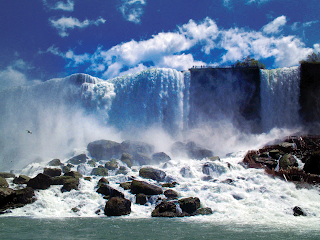Nilgris is a beautiful mountain range which is a part of Western Ghats. Totally there are three places to visit namely Kothagiri, Coonoor and Ooty. Among these three Ooty is given the primal importance because of its scenic Beauty and excellent climate conditions. Nilgris is oldest than the Great Himalayas. Like Icing on a cake ooty adds Pride to this mountain Range.
Tourist Places in Ooty
The erstwhile summer getaway of Britishers, Ooty is presently one of the most popular hill stations in South India. For all those who want to beat the heat, this Queen of Hill Stations stands with extended arms to gift all with a very memorable vacation. A trip to Ooty is coveted not just by mountain lovers but all those who seek few moments of solitude away from the hustle and bustle of city life in the lap of mesmerizing nature. In addition to the impressive mountain range of the Nilgiris, the lush green grasslands, the tea gardens, there are several other Tourist Places in Ooty that are all well worth a visit when on a tour to Ooty.One of the major tourist attractions is the Botanical Gardens in Ooty. Covering an extensive area of 50 acres, the Botanical Garden lies at the lower slopes of the Dodabetta Peak in Ooty and is home to an amazing variety of flora. Bird lovers will also love visiting the gardens because there are several resident as well as migratory birds in it. Incidentally the Dodabetta Peak is the highest point in Ooty and commands an absolutely spell binding view of the surrounding landscape. If you can make it to the top, you are sure to be impressed by the beautiful views.
The serene stretch of the Ooty Lake has a very tranquilizing effect on the minds of the visitors. Built by John Sullivan, this artificial lake is a must see when on a tour to Ooty. Engage yourself in the fun filled activities of Boating and Fishing at this lake.
When you are on a holiday in Ooty, you can easily plan a picnic at Lamb's Rock in Ooty. This picturesque spot also offers great views of the plains of Coimbatore and the tea estates on the mountain slopes. Take a camera to capture nature at its charming best.
When on a sight seeing trip in Ooty, make sure to visit the Kodanadu's View Point in Ooty. It is one of the most impressive of all the Tourist Places in Ooty. Positioned at the eastern range of the Nilgiri Mountains, it offers a view of the River Moyar. An added attraction is the watch tower from where one can also see the Rangaswamy Peak.
All the Tourist Places in Ooty are worth seeing and any tourist is sure to regret missing out on any. So make it a point to visit all the Tourist Places in Ooty.
Hotels in Ooty
If you are thinking of a Tour to Ooty and constantly being perturbed by the thought of whether you will get a hotel of your choice or not to put up in Ooty, we, at Ooty India assure you that accommodation in Ooty is never going to be a cause of concern. What was earlier the summer retreat of the British, has emerged as one of the most popular tourist destinations in South India and in order to keep pace with this rising tourist inflow, a large number of Hotels in Ooty have come up in recent years. There are different categories of Hotels in Ooty to cater to the needs and tastes of the diverse variety of tourists visiting this well liked place of Tamil Nadu. In order to savor the beauty of Ooty, endearingly referred to as the Queen of Hill Stations, it is very important that you enjoy comfortable accommodation, eat good food and are at the same time provided with all other standard facilities and services. The Hotels in Ooty are sure to provide you with all of them.
Transportation and Access
The hill station of Ooty, is a very popular hill station, so getting there is no problem. You can either travel by road, air or rail.
By Air
The nearest airport to Ooty is at a distance of about 88kms and is located in Coimbatore. There one can take Indian Airline flights to Coimbatore, Bangalore, Cochin and Chennai.
By Rail
The Ooty railway station is merely 2kms from the City Center and the other railway station is 46km away at Mettupalayam.
There is also a toy train that connects Ooty with Mettupalayam and Coonoor, another famous hill station. Though it is not really the fastest way to get there, but the guests can enjoy scenic beauty all along the way.
By Road
Traveling by road is a not a bad idea either, since Tamil Nadu has a very good road network. The state has many highways that connect distant places and make traveling much easier.
Ooty Tour Packages
Ooty is a beautiful hill station in Tamil Nadu India, where you can enjoy a delightful vacation. Ooty India offers Ooty tour packages and tour itineraries for Ooty that take you to the scenic hill station of Ooty in the Nilgiri Hills.See the beautiful 'Blue hills' of the Nilgiris, go on nature walks along winding roads, see hill slopes covered with greenery and wild flowers, hear the silence of the mountains broken only by the calls of birds and the chirping of crickets, while on Ooty tour packages with Ooty India. Stand at the edge of a cliff and see the astounding view of undulating hills and valleys extending as far as the eye can see. Have a relaxing holiday in the scenic hill station of Ooty with Ooty tour packages from Ooty India.
Tour Packages for Ooty India, which take you to the scenic hill resort of Ooty, are:
Ooty Photos Collection





Click Here For More Details











































